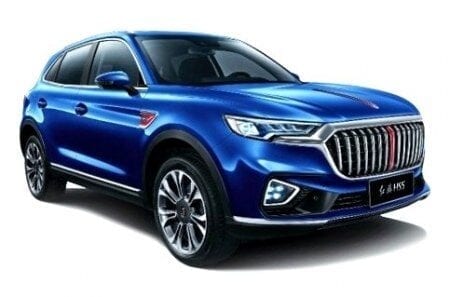
Maserati Levante 2016 review
Maserati's first SUV promises to be the luxury maker's most popular model when it hits showrooms, writes John Carey.
Yesterday's forms do not bring tomorrow's profits. While sexy sedans, seductive coupes and sleek sports cars have laid the foundation for Maserati's reputation, its future prosperity depends on the tall and heavy SUV. The new Levante, due to arrive in Australia later this year, is the first century-old SUV from the Italian automaker.
Maserati management expects the Levante to instantly become the brand's most popular model. During 2017, the first full year of production, sales of the SUV should easily surpass any other vehicle in its lineup.
In Australia, the Levante will be equipped richer than in Europe, promises the head of Maserati Australia Glen Sealey. Some items on the optional Sports and Luxury packages will be standard here, including a sunroof, paddle shifters, power steering column adjustment, rear camera and all-electric front seats, he said. Expect bigger wheels than the standard 18-inch in Europe, as well as better leather upholstery.
Seeley says the goal is to launch the Levante at a cost of "about $150,000."
That's $10,000 more than the diesel version of the Ghibli. That's an apt comparison, as it will feature the exact same engine and eight-speed automatic as the lower, lighter sedan.
The Levante could fill a new niche in the luxury car hierarchy.
But the Levante won't come to Australia with Ferrari's loud and lively 3.0-litre twin-turbocharged V6 petrol engine used in the Ghibli and Quattroporte. Cause? Right-hand drive Levantes only come with a 202-litre V3.0 turbodiesel with 6 kW. At the moment …
Despite the lack of diesel fuel, Seeley believes the Levante could carve out a new niche in the luxury car hierarchy — below exotic brands like Bentley and Ferrari, but above premium brands like Porsche and Jaguar.
So, in the case of the Levante, does the hardware live up to the hype? Basically yes.
Maserati engineers say the Ghibli served as the starting point for the SUV, and they are nearly identical in length (5 meters) and wheelbase (three meters). The efficient all-wheel drive system of the Levante is the same as that of the Maserati found on some left-hand drive versions of the Ghibli and Quattroporte. Maserati turned to Jeep for help developing and testing the system at the Levante. Both brands are part of the FCA (Fiat Chrysler Automobiles) family.
But the Levante has received an entirely new suspension setup to provide the ground clearance and wheel travel that an SUV needs. What's more, Maserati engineers have added air springs and adaptive dampers.
The Levante has four different driving modes, selectable by the driver, each of which affects the vehicle's ground clearance. Lower for sporty driving and speed, higher for off-road performance.
The Levante's suspension is outstanding, with grippy handling in sport mode and superb comfort in normal mode. For something weighing over two tons, its maneuverability on winding Italian back roads was truly astounding. Later, pumped in Off-Road mode, it showed that it had more features than any buyer could need.
The exhaust sounds better than any other turbodiesel on the market.
The diesel engine isn't all that brilliant by comparison. Performance is brisk enough, but not exciting. And while the exhaust sounds better than any other turbodiesel on the market, the Levante's very effective soundproofing keeps the volume down a notch, even in louder sport mode.
Maserati's first SUV is also the first model built with a range of driver assistance and safety technologies. The trident badge on the grille is actually a cover for the Levante's forward-facing radar, which is essential for its active cruise control and autonomous emergency braking systems. Such technology has been commonplace in premium Germans for years.
Italians are reluctant to admit that customers these days expect active security.
But you will not find such an interior as the Levante in any German car. It has a livelier feel and a looser look.
It's a welcome change from the dark, crisp, and harsh technical vibe that the Germans love so much.
Salon Maserati is also spacious, at least for four. The front and rear seats are good both in terms of comfort and spaciousness. At the rear is a wide, high-floor cargo area capable of holding a useful 680 liters.
There is no doubt that Maserati really has a presence on the road, especially when viewed from the front. It is unlike any other luxury SUV. It's sleeker than, say, a Porsche Cayenne. And it's not as stupidly compromised as the BMW X6.
But on the outside, the Levante looks a bit like a regular hatchback—say, a beefed up Mazda 3.
You can count on Maserati to release a Levante with a V8 engine.
Not that it's likely to put off those status-conscious and coveted SUVs that the Levante seeks to attract.
Diesel rules... for now
Maserati executives say they are looking closely at building the Levante with more powerful 3.0-litre twin-turbo V6 right-hand drive petrol engines. The problem is that there is little sales potential as luxury SUVs are dominated by diesel.
But you can count on Maserati to release a V8-powered Levante, the same 390kW Ferrari-built 3.8-litre twin-turbo engine used in the Quattroporte GTS. Engineers confirm that a prototype has already been built.
This engine is more likely to be produced in right-hand drive than the V6.
Do Porsche and Range Rover have reason to be concerned about the Maserati Levante? Tell us in the comments below.
At a glance
Price from: $150,000 (estimate)
Guarantee: 3 years / unlimited km
Safety: Not yet rated
Engine: 3.0-litre V6 turbo diesel; 202kW/600Nm
Transmission: 8-speed automatic; four-wheel drive
Thirst: 7.2l / 100km
Dimensions: 5003 mm (D), 1968 mm (W), 1679 mm (W), 3004 mm (W)
The weight: 2205kg
0-100 km / h: 6.9 dry

